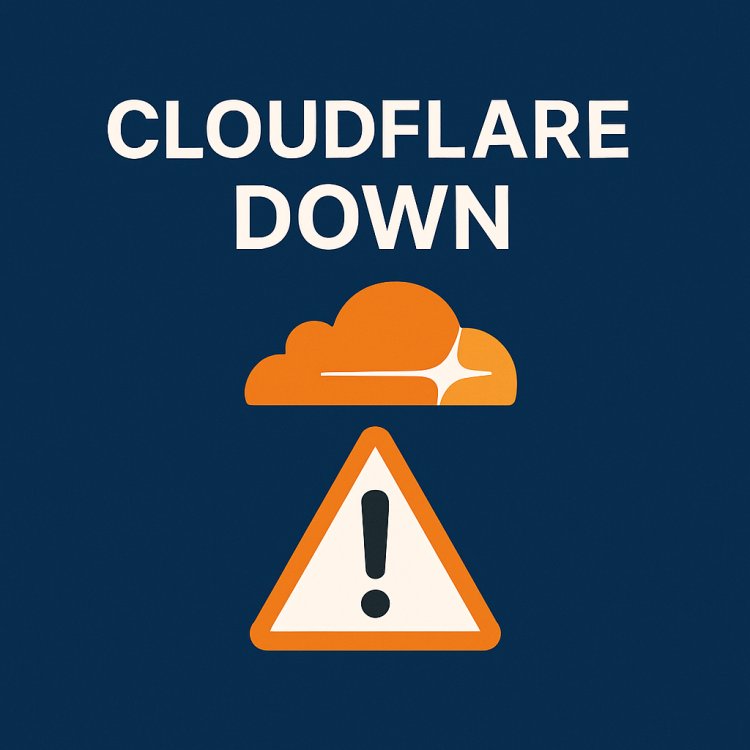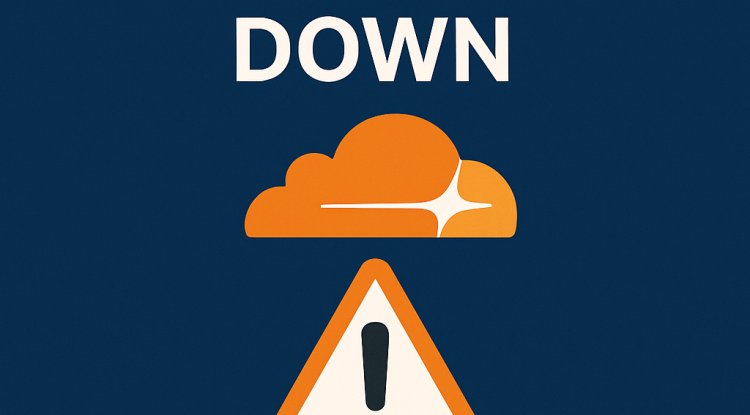Cloudflare Down: Why Websites Suddenly Break & What You Should Do
Cloudflare went down today, causing thousands of websites to crash or load slowly. In this article, I explain why Cloudflare outages happen, how they affect your site, and what steps you can take to stay prepared.

Cloudflare Down: Why It Happens & How It Impacts Websites
If you’ve ever opened your browser and suddenly found your website not loading, there's a big chance the reason is simple: Cloudflare is down.
As a developer myself, I remember working on a client project late at night. Everything was running smoothly, and suddenly every site using Cloudflare went offline — including mine. I refreshed the browser, restarted the server, even blamed my internet… later I found out it was Cloudflare’s global outage.
So let’s break down what actually happens during a Cloudflare outage and what you can do about it.
What Is Cloudflare & Why So Many Sites Depend on It?
Cloudflare is like a bodyguard + speed booster for websites.
It provides:
-
CDN (Content Delivery Network)
-
DDoS protection
-
DNS management
-
Firewall
-
Load balancing
Because Cloudflare sits between your server and your visitors, when Cloudflare goes down, your website goes down, even if your hosting is perfectly fine.
Why Does Cloudflare Go Down?
1. Network Overload or Internal Issues
Sometimes Cloudflare pushes a configuration update that breaks something globally.
A single wrong rule can cause millions of websites to break — just like a wrong config in Nginx can break your whole server.
2. Massive DDoS Attacks
Cloudflare handles billions of cyber-attacks daily.
When hackers launch extremely huge DDoS attacks, some regions get overloaded, causing slowdowns or outages.
3. Routing Problems
Undersea cable issues, ISP-level problems, or BGP routing failures can disrupt Cloudflare's network.
4. Hardware Failure
A rare issue, but sometimes a data center faces power loss or hardware malfunction.
How to Know If Cloudflare Is Down?
Here are quick ways I use:
1. Status Page
Check Cloudflare’s official status page:
status.cloudflare.com
2. Third-party Monitoring
DownDetector often reports Cloudflare outages quickly.
3. Check Other Cloudflare Websites
If popular sites like Shopify, Bluehost, Fiverr, Canva load slowly, Cloudflare may be the issue.
What to Do When Cloudflare Goes Down
1. Don’t Panic — It’s Not Your Hosting
99% of users start restarting servers — totally unnecessary.
2. Disable Cloudflare (If Urgent)
You can switch DNS to direct your server temporarily:
-
Remove the orange cloud → Turn off proxy
-
Keep DNS only → Grey cloud
(This will remove protection but your site may load again.)
3. Announce Maintenance
If you’re running a business website:
-
Update customers using email or social media
-
Tell them it’s a global issue
4. Stay Patient
Cloudflare outages usually recover within 5–30 minutes.
How to Protect Your Website from Future Outages
1. Multi-CDN Setup
Use more than one CDN provider (e.g., Cloudflare + BunnyCDN).
2. Backup DNS Providers
Use secondary DNS (like Google DNS, AWS Route 53).
3. Caching System on Your Server
Local caching helps even if CDN fails.
4. Real-time Monitoring Tools
Tools like UptimeRobot and BetterStack notify you instantly.
Final Thoughts
Cloudflare outages remind us that even the biggest companies can fail.
But as website owners, developers, or tech enthusiasts, we must stay prepared.
Personally, whenever Cloudflare goes down, I use that time to check:
-
My server setup
-
Caching rules
-
Security configs
-
DNS backup
Because outages are annoying… but they teach us how important uptime is.
What's Your Reaction?










